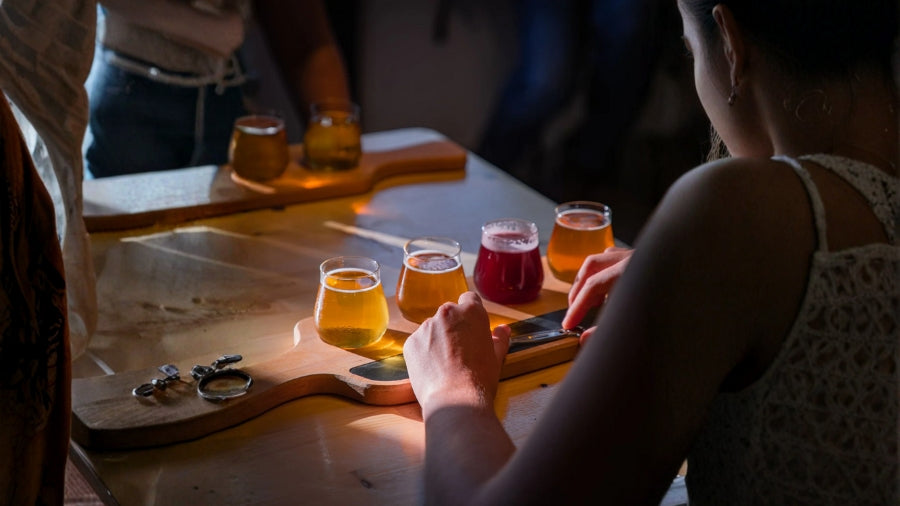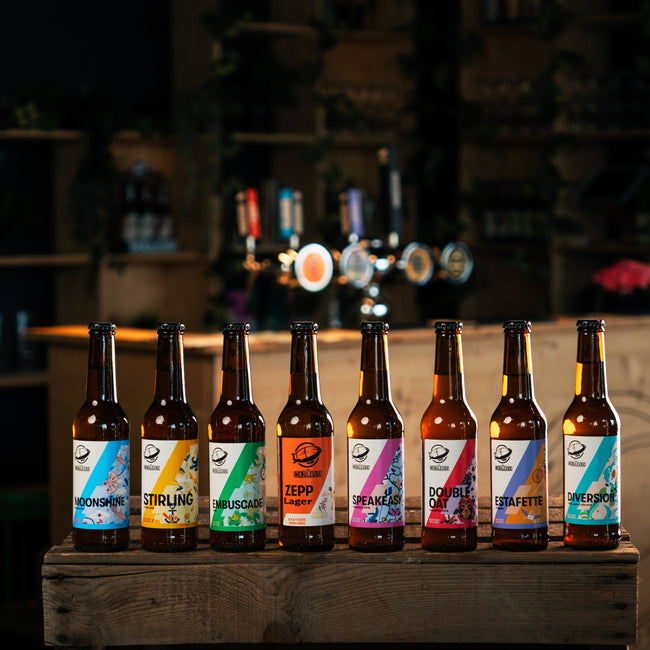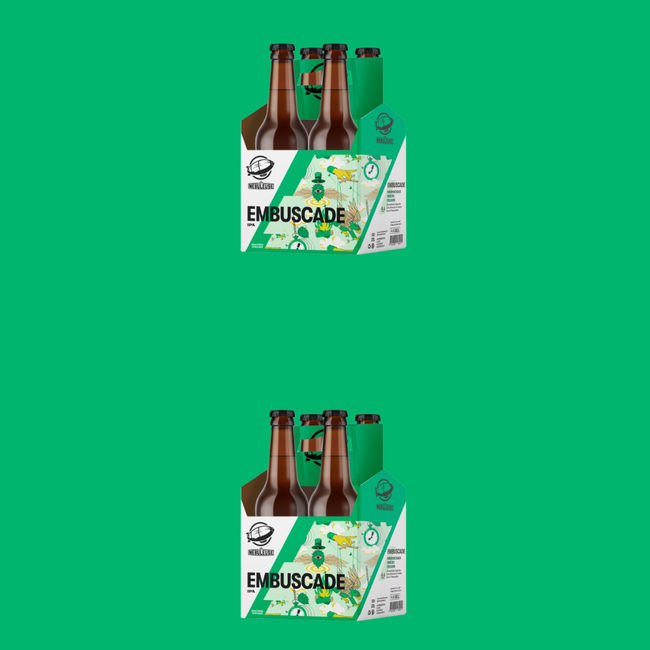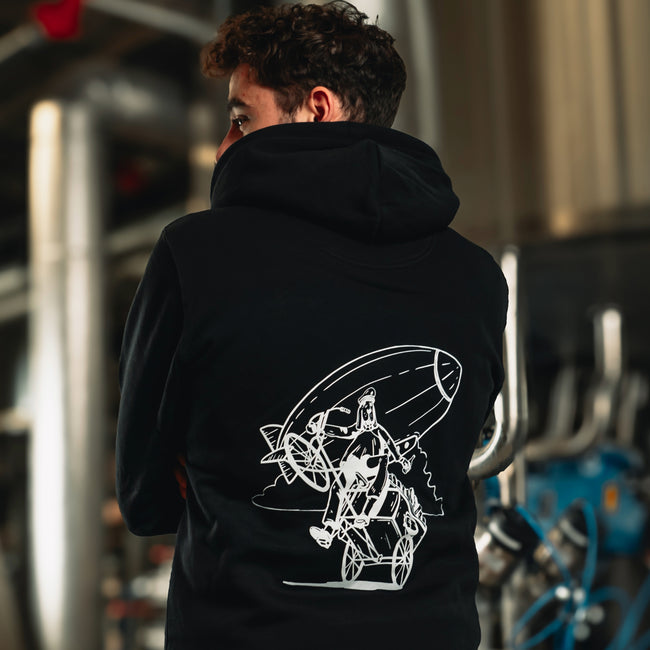Recognize beer styles at a glance

If there's one thing that makes the world of craft beer fascinating, it's the sheer diversity of styles available. Whether you're a seasoned beer connoisseur or a curious novice, knowing how to recognize different types of beer can turn a simple tasting into a sensory exploration. Each style has its own unique characteristics , ranging from the refreshing lightness of a lager to the complex power of a triple. But how do you navigate this galaxy of flavors, aromas, and textures?
This article is here to guide you through the most iconic beer styles, offering insight into the specificities of each. We'll dissect IPAs, stouts, pale ales, and many more, explaining how to recognize and fully appreciate them. You'll also discover tips for choosing the ideal beer for your tastes or the occasion, as well as suggestions for food and beer pairings to enhance your tastings.
IPA – The Queen of Bitterness
India Pale Ales, more commonly known as IPAs, have become the epitome of craft beers. But what makes them so popular? It's all about the hops. With explosive aromas of citrus, resin, or tropical fruit, IPAs captivate with their aromatic intensity and often pronounced bitterness. They come in several variations, offering a range of flavors to please every palate.
Characteristics of IPAs
IPAs are distinguished by their strong hop content, which gives them powerful aromas and a pronounced bitterness. They often feature citrus notes, such as grapefruit or orange, or hints of tropical fruits like mango or passion fruit. The body can vary from fairly light for Session IPAs to richer and more resinous for Double IPAs. The color, meanwhile, ranges from pale gold to dark amber, depending on the malts used.
Example at La Nébuleuse: Embuscade is a balanced IPA with notes of fruit paste, blood orange and resin and a bitterness that is present but not overwhelming, perfect for a first approach to IPAs.
Food and beer pairings
IPAs pair wonderfully with spicy dishes, their bitterness counterbalancing the heat of the food. They're ideal with spicy Indian cuisine or tangy tacos. Cheese also finds a ally with IPAs: try them with mature cheddar or blue cheese for a striking contrast. On the meat side, grilled chicken wings or burgers with intense flavors will enhance the beer's hoppy aromas.
Tips for Enjoying IPAs
For those new to IPAs, it's recommended to start with lighter versions like Session IPAs, which offer aromatics without too much bitterness. New England IPAs (NEIPAs), with their smooth texture and fruity aromas, are also an excellent entry point for newbies. Feel free to experiment with different variations to find the one that best suits your bitterness tolerance and taste for hoppy aromas. Enjoy them at a temperature of 7-10°C for optimal flavor development.
Stout – The intensity of roasted malt
Stouts are the epitome of richness and depth in the beer world. With their intense flavors of coffee, dark chocolate, and sometimes caramel , they offer a rich and comforting drinking experience. This style of beer is often associated with winter evenings and desserts, but it lends itself to much more than that.
Characteristics of stouts
Stouts are distinguished by their dark, almost black color and generally dense body. They get their aromatic complexity from roasted malt, which gives them notes of coffee, cocoa, licorice, and sometimes black fruits. Their bitterness, while present, is often mild and balanced by a certain sweetness, especially in Milk Stouts, which incorporate lactose to soften the taste. Imperial Stouts, on the other hand, take the intensity even further with high alcohol levels and complex flavors, perfect for sipping.
Example at La Nébuleuse: Malt Capone , a Pecan Stout with aromas of roasted nuts, chocolate and caramel, offering a real explosion of gourmet flavors.
Food and beer pairings
Stouts are perfect partners for desserts. Their deep flavors pair perfectly with chocolatey pastries like fondant or brownies. They also lend themselves to bolder pairings, such as with bold blue cheeses (Roquefort, Stilton) or richly flavored stews, such as beef bourguignon or pork stew. For a surprising pairing, try a stout with fresh oysters—the iodine in the oyster contrasts fascinatingly with the coffee and chocolate notes in the beer.
Tips for Enjoying Stouts
Stouts are best enjoyed at a slightly higher temperature than other beers, around 10-12°C, to reveal the full complexity of their aromas. Don't hesitate to let them "breathe" in the glass for a few minutes before enjoying. For those interested in exploring this style, start with milder versions like Milk Stouts before venturing into the more robust Imperial Stouts. Coffee lovers will often find interesting aromatic similarities, especially with stouts that feature notes of freshly roasted coffee beans.
Pale Ale – The balance of malty and hoppy flavors
Pale Ales are the perfect balance of malts and hops , offering a harmonious and approachable tasting experience. While less intensely hoppy than IPAs, they still possess a pleasant bitterness, softened by malty notes that range from biscuit to caramel. This style is ideal for those looking for a balanced and versatile beer.
Characteristics of pale ales
Pale Ales are characterized by moderate bitterness and a wide range of aromas, ranging from floral to citrus, caramel, and spice, depending on the hops and malts used. They are often golden to amber in color, with a medium body that makes them easy to drink. American Pale Ales (APAs) are distinguished by their more pronounced hoppiness with resinous and fruity aromas, while English Pale Ales emphasize more malty flavors and a milder bitterness.
Example at La Nébuleuse: Stirling , a gluten-free Pale Ale which presents notes of grapefruit and lychee, balancing a slight bitterness with a nice roundness in the mouth.
Food and beer pairings
Pale ales, thanks to their balance, pair well with a wide variety of dishes. They pair perfectly with white meats like roast chicken or grilled pork, adding a slight bitterness that counteracts fatty flavors. For vegetarian dishes, pale ales pair well with mixed salads or grilled vegetable dishes, where their fruity flavor profile complements the freshness of the ingredients. As for cheese, they pair well with mild, creamy cheeses like brie or camembert.
Tips for Enjoying Pale Ales
Pale ales are ideal for beginners thanks to their balanced flavor profile. For a first taste, choose an American Pale Ale (APA) to discover the moderate bitterness and fruity aromas. Enjoy them at a temperature of 6-8°C to fully appreciate their flavors. Don't hesitate to explore local variations, as each brewer can bring a unique twist to this classic style. Pale ales are ideal for drinking at any time of day, whether as an aperitif or with a light meal.
Blanche – Fruity and spicy freshness
Wheat beers, also known as witbiers or wheat beers, are synonymous with freshness and lightness . They are prized for their delicate aromas of citrus and spices, and their silky texture on the palate. This style is perfect for light beer lovers looking for a refreshing alternative to traditional lagers.
Characteristics of white beers
Wheat beers are distinguished by their pale, cloudy color , due to the use of unmalted wheat in addition to barley. They often feature citrus aromas (such as orange or lemon) and spicy notes of coriander or clove, brought by special yeasts and the addition of spices during brewing. They are light to medium-bodied, with a lively effervescence that accentuates their refreshing character. Their mild flavors and low bitterness make them easy to enjoy, even for less discerning palates.
Example at La Nébuleuse: Moonshine , a white beer with refreshing citrus notes and a subtle touch of spice, ideal for hot days or aperitifs with friends.
Food and beer pairings
Wheat beers pair particularly well with light dishes and seafood. Their freshness and citrus aromas harmonize perfectly with oysters, grilled shrimp, or a tangy ceviche. They also pair wonderfully with summer salads made with crisp vegetables, fresh fruit, and light cheeses like goat cheese or feta. For those who prefer spicy dishes, they offer a refreshing contrast with Asian dishes or fish tacos.
Tips for enjoying wheat beers
To fully enjoy the delicate flavors of wheat beers, serve them chilled, at a temperature of 4-6°C. Use a wide-mouthed glass to concentrate the spicy and fruity aromas, and pour gently, leaving a little beer in the bottle to prevent yeast from settling. This sediment can be poured last, if preferred, to enrich the texture and flavor. Wheat beers are perfect as an aperitif or to accompany light summer dishes. Their low bitterness also makes them an excellent choice for introducing novices to the world of craft beers.
Lager – Thirst-quenching simplicity
Lagers are often considered the most approachable and thirst-quenching beer style. Their global popularity stems from their freshness and lightness , making them perfect for socializing. Unlike ales, lagers are fermented at low temperatures with specific yeasts that give them a clean, crisp profile. This style comes in several variations , offering subtle nuances of flavor and aroma.
Characteristics of lagers
Lagers are generally clear and golden in color, with a clean taste and low bitterness. Their aromas range from floral to malty, with notes of bread, biscuit, or sometimes toasted cereal. They are often less complex than ales, but their simplicity is their strength. Varieties include pilsners, helles, and Vienna lagers, each bringing its own nuances. Pilsners, for example, are hoppier and bitterer, while helles are characterized by milder, malty flavors.
Example at La Nébuleuse: Zepp , a light craft lager inspired by Bavarian Pilsners with a subtle bitterness and floral notes, perfect for refreshing yourself on sunny days or accompanying a barbecue with friends.
Food and beer pairings
Lagers are extremely versatile and pair well with a wide range of dishes. They pair perfectly with simple dishes like pizza, burgers, or hot dogs, where their lightness cleanses the palate without overpowering the flavors of the dish. They're also ideal with grilled fish like salmon or trout, where their malty notes complement the delicate flavors of the fish. For Asian dishes, their refreshing character counterbalances the spices without overwhelming the subtle flavors.
Tips for enjoying lagers
To get the most out of lagers, serve them chilled, at a temperature of 4-6°C. Use a straight glass or a pilsner glass to preserve their effervescence and concentrate the aromas. Lagers are perfect for casual occasions and warm days, where their refreshing character can be fully appreciated. For beginners, starting with a craft lager like Zepp can be a great introduction to the diversity of craft beers while sticking to familiar flavors.
Triple – Richness and power on the palate
Triple beers are powerful and complex beers that combine alcoholic intensity with aromatic richness. Originating in Belgium, they are characterized by fruity and spicy flavors, often accompanied by a slight sweetness on the finish. This style is perfect for those seeking a deeper, more nuanced tasting experience.
Characteristics of triples
Tripels are distinguished by their golden to amber color and relatively light body despite their high alcohol content (usually between 8 and 10% ). They offer a complex palette of aromas: ripe fruits (banana, pear), spices (clove, coriander), honey , and yeast. The alcohol is well integrated, making the beer warming without being overwhelming. Tripels are often well carbonated, which adds a sparkling mouthfeel and highlights their complex aromas.
Example at La Nébuleuse: Estafette , a rich triple with fruity and spicy notes, with a slightly sweet finish that balances the warmth of the alcohol.
Food and beer pairings
Triples pair perfectly with rich, flavorful dishes. Their alcohol content and aromatic complexity perfectly complement sauce-based dishes like coq au vin or roast pork with herbs. They also pair very well with mature, full-bodied cheeses like aged Gouda, Comté, or Munster, where their sweetness and aromatic strength balance the character of the cheeses. As a dessert, they are delicious with fruit tarts, spicy desserts, or dried fruit cakes.
Tips for Enjoying Triples
Triples are best enjoyed slowly to savor all their nuances. Serve them at a temperature of 8-12°C in a tulip glass, which concentrates the aromas while allowing for good aeration. Allow the beer to warm slightly in the glass to reveal its successive layers of flavors. For lovers of milder beers, starting with half glasses can help them get used to the strength of this style. Triples are perfect for tasting after a meal, where they can replace a digestif while also accompanying cheese or dessert.
Alcohol-free – Pleasure without compromise
Alcohol-free beers have long suffered from a bad reputation, perceived as bland or too light. However, craft breweries have risen to the challenge by creating alcohol-free beers that retain all the aromatic richness of classic beers, without the intoxicating effect. Whether for health reasons, driving safety, or simply for variety, alcohol-free beers offer an increasingly popular alternative.
Characteristics of non-alcoholic beers
Non-alcoholic beers offer a variety of flavor profiles, ranging from surprisingly complex to refreshingly light. Most non-alcoholic beers have an alcohol content of less than 0.5% , while still retaining hop and malt aromas. Thanks to advances in brewing technology, non-alcoholic beers can now offer a variety of styles, from lagers to IPAs and even stouts. They are often slightly sweet, with a lighter body and moderate bitterness.
Example at La Nébuleuse: Diversion , an alcohol-free IPA that manages to capture the fruity aromas and sweet bitterness typical of IPAs, while remaining light and thirst-quenching.
Food and beer pairings
Non-alcoholic beers pair well with light, fresh dishes. They're ideal for accompanying mixed salads, vegetarian dishes, or sushi. Their natural sweetness also makes them perfect with fruity desserts like apple pie, berry crumble, or fruit salad. They can also be served as an aperitif with tapas or appetizers, offering a refreshing, alcohol-free option for all guests.
Tips for Enjoying Non-Alcoholic Beers
To fully enjoy a non-alcoholic beer, serve it chilled, at a temperature of 4-6°C. Use a glass appropriate for the style to maximize the aromas: a tulip glass for a non-alcoholic IPA like Diversion, or a straight glass for a non-alcoholic lager. Non-alcoholic beers are ideal for daytime drinking or at events where you want to enjoy the taste of beer without its effects. Feel free to explore the different styles available to find the one that best suits your preferences.
Conclusion
Whether you're a fan of explosive hops, malty sweetness, or refreshing lightness, there's a beer style for every taste and occasion. Knowing the characteristics of different styles opens up an infinite world of flavor discoveries. From decidedly bitter IPAs to coffee-forward stouts, from balanced pale ales to powerful tripels, each beer tells a unique story through its ingredients and brewing process.
La Nébuleuse invites you to explore this brewing diversity through its creations, each the result of passionate craftsmanship and a constant quest for innovation. Whether you're a novice or a connoisseur, there's always a new flavor to discover and enjoy. So, the next time you're faced with a shelf full of craft beers, remember these few keys to choosing the one that best suits your taste buds. And above all, don't hesitate to think outside the box to broaden your taste buds.
Cheers 🍻









